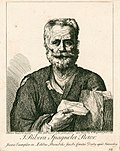Tiedosto:La Sagrada Familia, por José de Ribera.jpg
Siirry navigaatioon
Siirry hakuun

Tämän esikatselun koko: 445 × 599 kuvapistettä. Muut resoluutiot: 178 × 240 kuvapistettä | 356 × 480 kuvapistettä | 570 × 768 kuvapistettä | 760 × 1 024 kuvapistettä | 1 520 × 2 048 kuvapistettä | 2 763 × 3 722 kuvapistettä.
Alkuperäinen tiedosto (2 763 × 3 722 kuvapistettä, 1,89 MiB, MIME-tyyppi: image/jpeg)
Tiedoston historia
Päiväystä napsauttamalla näet, millainen tiedosto oli kyseisellä hetkellä.
| Päiväys | Pienoiskuva | Koko | Käyttäjä | Kommentti | |
|---|---|---|---|---|---|
| nykyinen | 8. joulukuuta 2015 kello 21.30 |  | 2 763 × 3 722 (1,89 MiB) | Alonso de Mendoza | User created page with UploadWizard |
Tiedoston käyttö
Seuraava sivu käyttää tätä tiedostoa:
Tiedoston järjestelmänlaajuinen käyttö
Seuraavat muut wikit käyttävät tätä tiedostoa:
- Käyttö kohteessa ca.wikipedia.org
- Käyttö kohteessa de.wikipedia.org
- Käyttö kohteessa en.wikipedia.org
- Käyttö kohteessa et.wikipedia.org
- Käyttö kohteessa fa.wikipedia.org
- Käyttö kohteessa fr.wikipedia.org
- Käyttö kohteessa it.wikipedia.org
- Käyttö kohteessa ja.wikipedia.org
- Käyttö kohteessa lt.wikipedia.org
- Käyttö kohteessa sk.wikipedia.org
- Käyttö kohteessa tr.wikipedia.org
- Käyttö kohteessa vi.wikipedia.org
- Käyttö kohteessa www.wikidata.org
- Q19911538
- Wikidata:WikiProject sum of all paintings/Collection/Metropolitan Museum of Art/17th Century
- User:Pharos/sandbox
- Wikidata:WikiProject sum of all paintings/Creator/Jusepe de Ribera
- Wikidata:Met Open Access Artworks Challenge/FA
- Wikidata:GLAM/Metropolitan Museum of Art/Highlights inventory
- Wikidata:GLAM/Metropolitan Museum of Art/TOAH inventory
- Wikidata:GLAM/Metropolitan Museum of Art/Reports
- Wikidata:WikiProject sum of all paintings/Catalog/The Metropolitan Museum of Art Guide
- Wikidata:WikiProject sum of all paintings/Catalog/Earl of Northbrook collection, 1889
- Käyttö kohteessa zh.wikipedia.org



